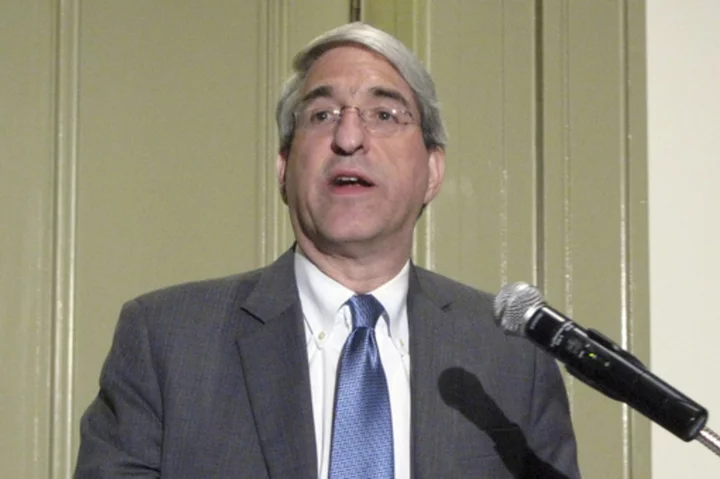NEW HAVEN, Conn. (AP) — Yale University President Peter Salovey, who has led the Ivy League school for the past decade, announced Thursday that he will step down from his post next year and plans to return to Yale's faculty.
Salovey, 65, has been president since 2013 after having served just over four years as Yale's provost, following stints as dean of both Yale College and the Graduate School of Arts and Sciences as well as chairperson of the Psychology Department. He also earned master's degrees and a doctorate in psychology at Yale in the 1980s before joining the Yale faculty in 1986.
“Ultimately, I plan to return to the Yale faculty, work on some long-delayed writing and research projects, and renew my love of teaching and working with students while continuing to help with fundraising,” Salovey wrote in a letter to the Yale community.
Salovey, who became Yale's 23rd president after Richard Levin's two-decade tenure, said he will leave the post next June after the current academic year ends, but he would stay on longer if Yale needs more time to find his successor.
Yale officials cited Salovey for numerous accomplishments. The school added 2.2 million square feet of teaching and research space during his presidency, and its endowment increased from $20.8 billion in 2013 to more than $41 billion as of last year. Yale also has launched a research project delving into Yale's historical ties to slavery, school officials said.
The New Haven school also has seen controversy during Salovey's tenure.
Last week, Yale and a student group announced they settled a federal lawsuit accusing the school of discriminating against students with mental health disabilities, including pressuring them to withdraw. Yale agreed in the settlement to modify its policies.
Yale also is being sued on allegations it discriminates against Asian-American and white applicants by improperly using race as an admission standard in an effort to ensure a racially balanced student body. Yale officials have denied wrongdoing and alleged the lawsuit includes misleading statistics and factual errors.









